Seismic Response Sensitivity Analysis of the Raft Foundation NPP Reactor Building under Different Site Conditions
Abstract
:1. Introduction
2. Numerical Analysis Method and Models
2.1. Finite Element Model
2.2. Site Conditions
2.3. Ground Motion Input
3. Layout Principle
4. Analysis of Different Sites
4.1. Seismic Response Analysis of the Raft Foundation in the Bedrock Site
4.2. Seismic Response Analysis of the Raft Foundation in the Firm Rock Site
4.3. Seismic Response Analysis of Raft Foundation in Guangdong NPP
5. Results and Discussion
5.1. Seismic Response Analysis under the Ground Motion of the Guangdong NPP Site
5.2. Seismic Response Analysis under the Ground Motion of the Kobe Earthquake
6. Conclusions
- The shear wave velocity of the site had a significant influence on the seismic response of the raft foundation NPP reactor building. With the increase in the shear wave velocity, the peak acceleration and peak acceleration of floor response spectrum were increased.
- Under different site conditions, the peak value of the acceleration at the outer ring point of the raft foundation reactor building was the largest, and the peak value of the acceleration at the center point was the smallest. The reduction rate of the peak acceleration varied from 3% to 10%.
- Under different site conditions, the peak value of the floor response spectrum at the outer ring point of the reactor building raft foundation was the largest, and the peak value of the response spectrum at the center point was the smallest.
- On the basis of the research in this paper, the outer ring point of raft foundation reactor building was found to be the most sensitive for an earthquake. It is suggested that the seismic instrument used for ASTS should be arranged at the outer ring of the raft foundation of the reactor building. Shutdown threshold shall be calculated according to different site conditions and structural characteristics and set according to SL-2.
Author Contributions
Funding
Data Availability Statement
Acknowledgments
Conflicts of Interest
References
- HAD102/02-2019; Seismic Design and Evaluation of NPPs. National Nuclear Safety Administration: Beijing, China, 2019.
- GB50267-2019; Code for Seismic Design of Nuclear Power Plants. China Architecture and Building: Beijing, China, 2019.
- ANSI/ANS2.2; Earthquake Instrumentation Criteria for Nuclear Power Plants. American Nuclear Society: LaGrange Park, IL, USA, 2002.
- USNRC. Seismic Instrumentation. Standard Review Plan; United States Nuclear Regulatory Commission: Rockville, MD, USA, 2007.
- USNRC. Nuclear Power Plant Instrumentation Earthquakes; United States Nuclear Regulatory Commission: Rockville, MD, USA, 1997.
- Lu, Y.; Wang, Q.; Sun, Z. Review Experience Feedback on Seismic Instrumentation in Nuclear Power Plant; National Conference Structural Mechanicsin Reactor Technology: Shanghai, China, 2012. [Google Scholar]
- Li, L.; Du, X.; Pan, R. Research on Improved Seismic Instrumentation System for Nuclear Power Plants. Energies 2021, 14, 4262. [Google Scholar] [CrossRef]
- Nguyen, D.-D.; Thusa, B.; Park, H. Efficiency of various structural modeling schemes on evaluating seismic performance and fragility of APR1400 containment building. Nucl. Eng. Technol. 2021, 53, 2696–2707. [Google Scholar] [CrossRef]
- Elkhoraibi, T.; Hashemi, A.; Ostadan, F. Probabilistic and deterministic soil structure interaction analysis including ground motion incoherency effects. Nucl. Eng. Des. 2014, 269, 250–255. [Google Scholar] [CrossRef]
- Politopoulos, I.; Sergis, I.; Wang, F. Floor response spectra of a partially embedded seismically isolated nuclear plant. Soil Dyn. Earthq. Eng. 2015, 78, 213–217. [Google Scholar] [CrossRef]
- Farahani, R.V.; Dessalegn, T.M.; Vaidya, N.R.; Bazan-Zurita, E. Seismic soil–structure interaction analysis of a nuclear power plant building founded on soil and in degraded concrete stiffness condition. Nucl. Eng. Des. 2016, 297, 320–326. [Google Scholar] [CrossRef]
- Halbritter, A.L.; Krutzik, N.J.; Boyadjiev, Z.; Katona, T. Dynamic analysis of VVER type nuclear power plants using different procedures for consideration of soil-structure interaction effects. Nucl. Eng. Des. 1998, 182, 73–92. [Google Scholar] [CrossRef]
- Elaidi, B.M.; Eissa, M.A. Soil-structure interaction in fuel handling building. Nucl. Eng. Des. 1998, 181, 145–156. [Google Scholar] [CrossRef]
- Leonardo, T.S.; Richard, S.O.; Sener, T.; Peña Ruiz, D. Finite Element Modeling of the AP1000 Nuclear Island for Seismic Analyses at Generic Soil and Rock Sites. Nucl. Eng. Des. 2007, 237, 1474–1485. [Google Scholar]
- Tabatabaie-Raissi, M. The Flexible Volume Method for Dynamic Soil-Structure Interaction Analysis; University of California: Los Angeles, CA, USA, 1982. [Google Scholar]
- Zhao, M.; Wang, X.; Zhong, Z. Study on seismic responses of nuclear island structure in non-bedrock site under obliquely incidence of p waves. Eng. Mech. 2020, 37, 43–51. [Google Scholar]
- Frano, R.L.; Forasassi, G. Isolation systems influence in the seismic loading propagation analysis applied to an innovative near term reactor. Nucl. Eng. Des. 2010, 240, 3539–3549. [Google Scholar] [CrossRef]
- Du, X.L.; Zhao, M. A local time-domain transmitting boundary for simulating cylindrical elastic wave propagation in infinite media. Soil Dyn. Earthq. Eng. 2010, 30, 937–946. [Google Scholar] [CrossRef]
- Zhao, M.; Gao, Z.D.; Wang, L.T.; Du, X. Obliquely incident earthquake input for soil-structure interaction in layered half space. Earthq. Struct. 2017, 13, 573–588. [Google Scholar]
- IAEA TECDOC-1956; Seismic Instrumentation System and Its Use in Post-Earthquake Decision Making at Nuclear Power Plants. International Atomic Energy: Vienna, Austria, 2021.

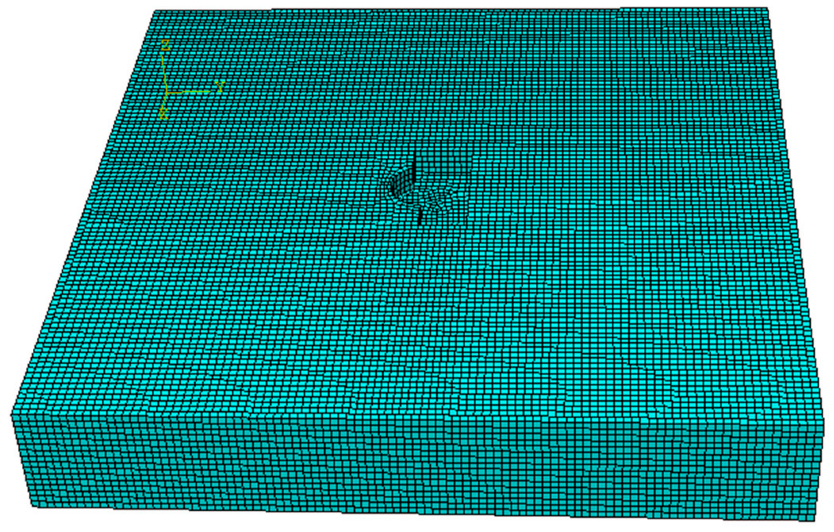

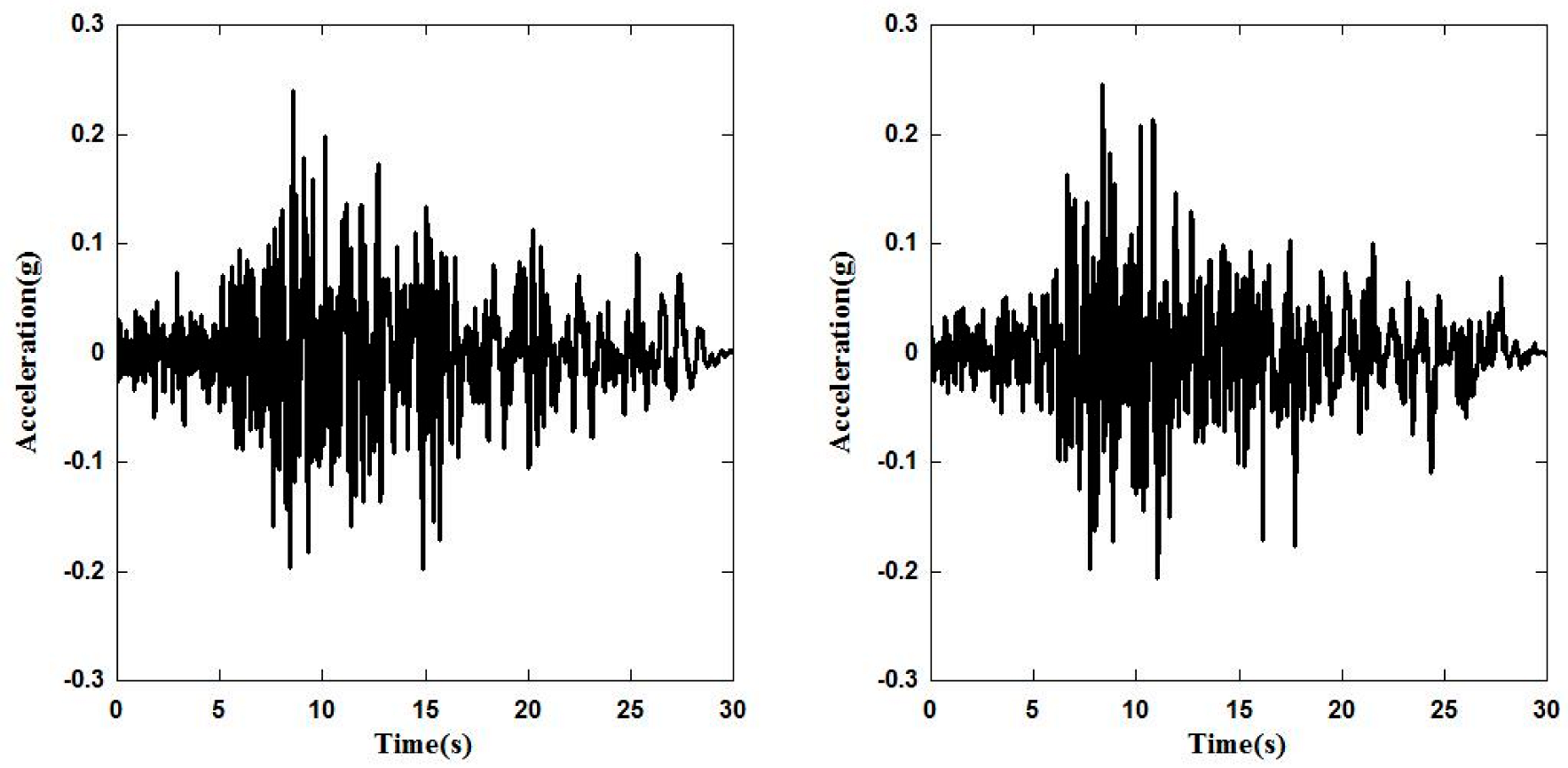
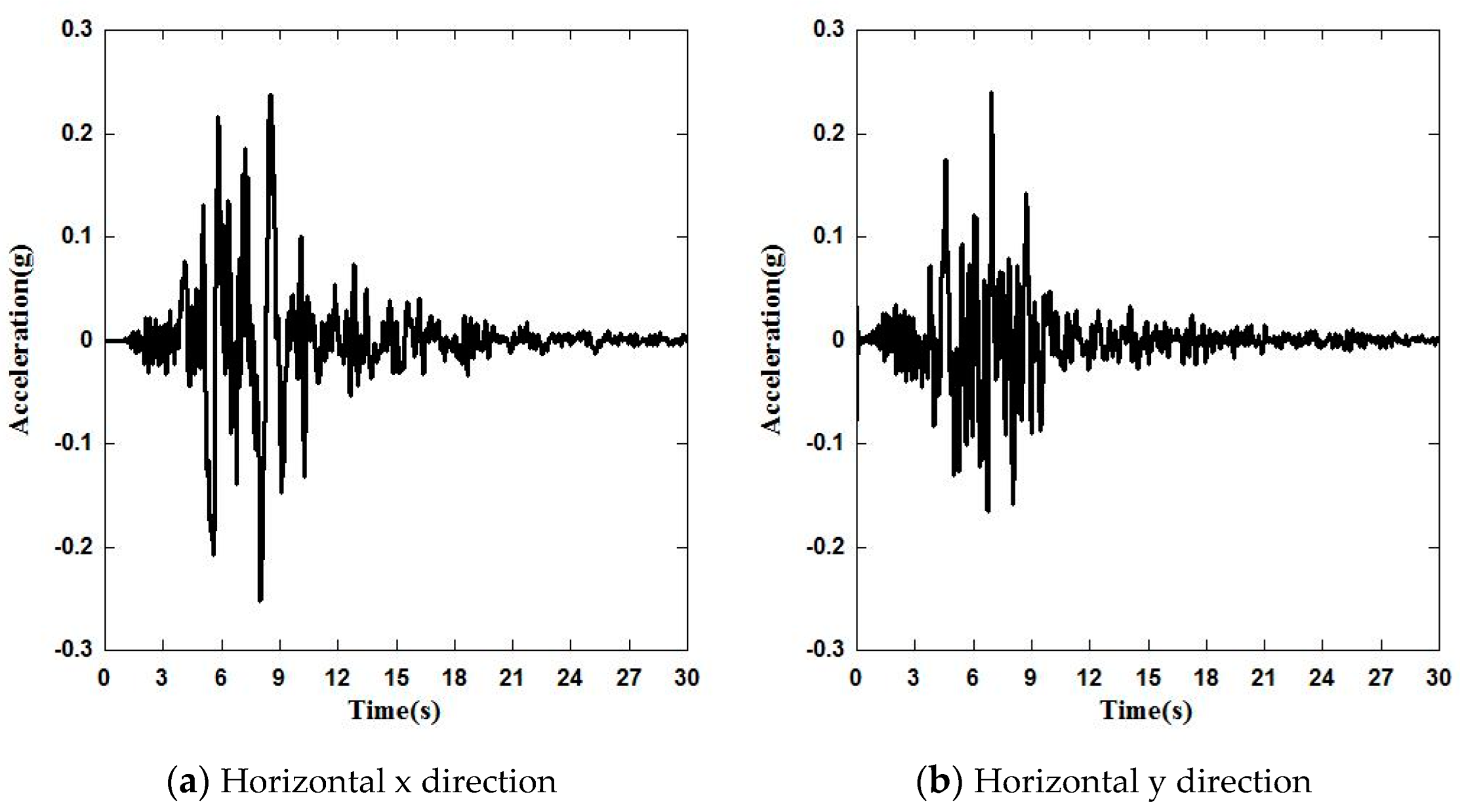
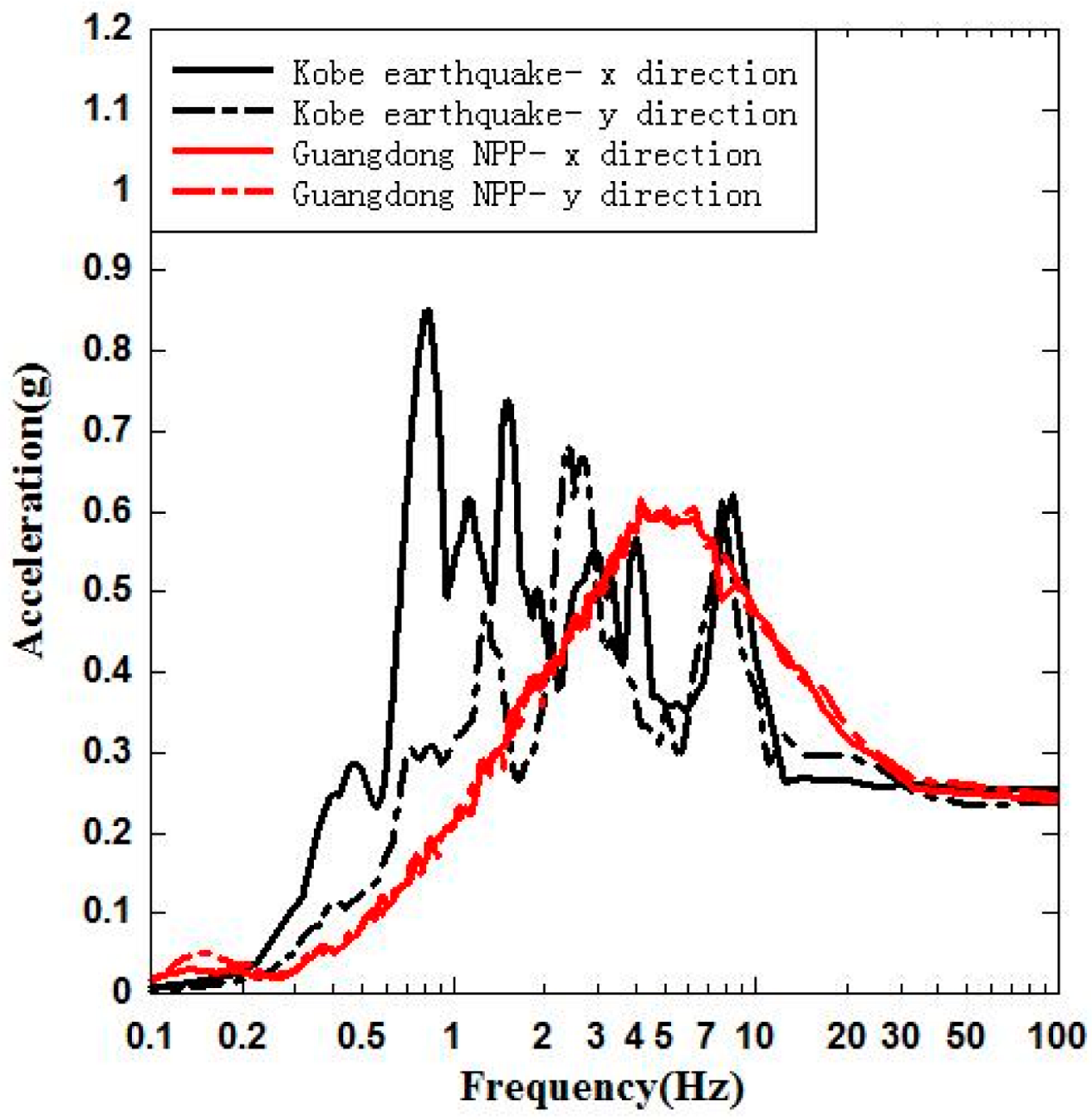
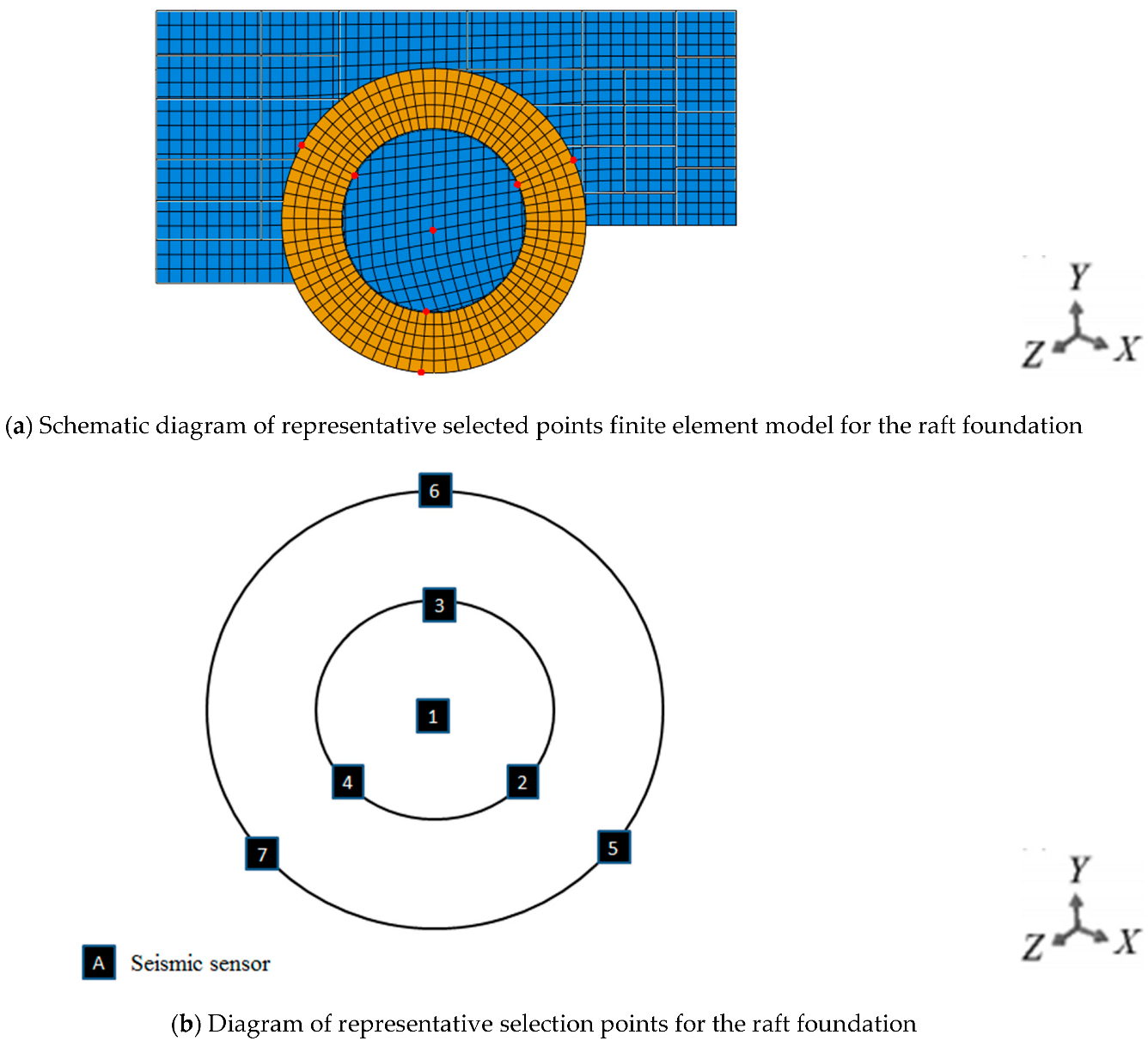

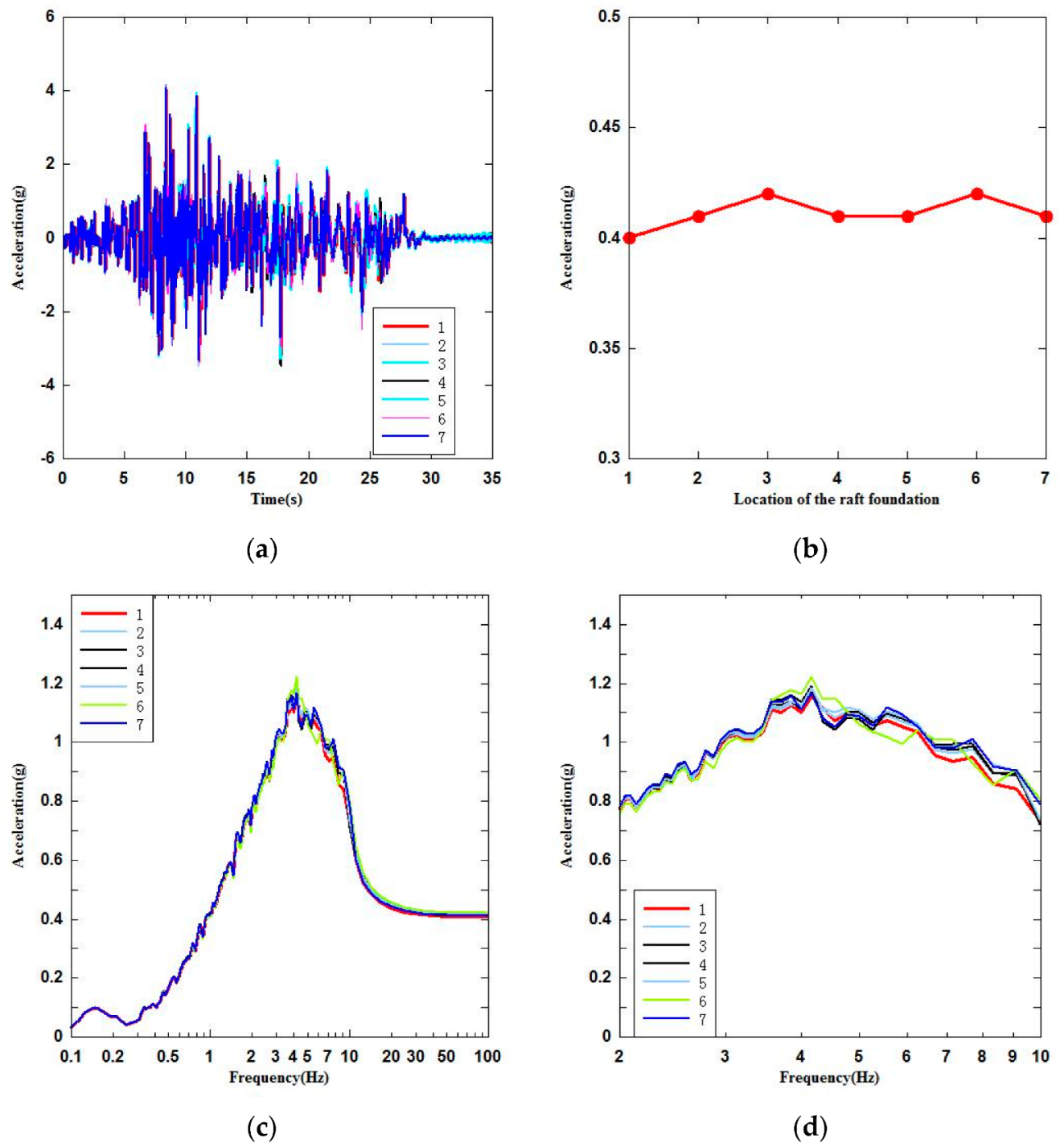
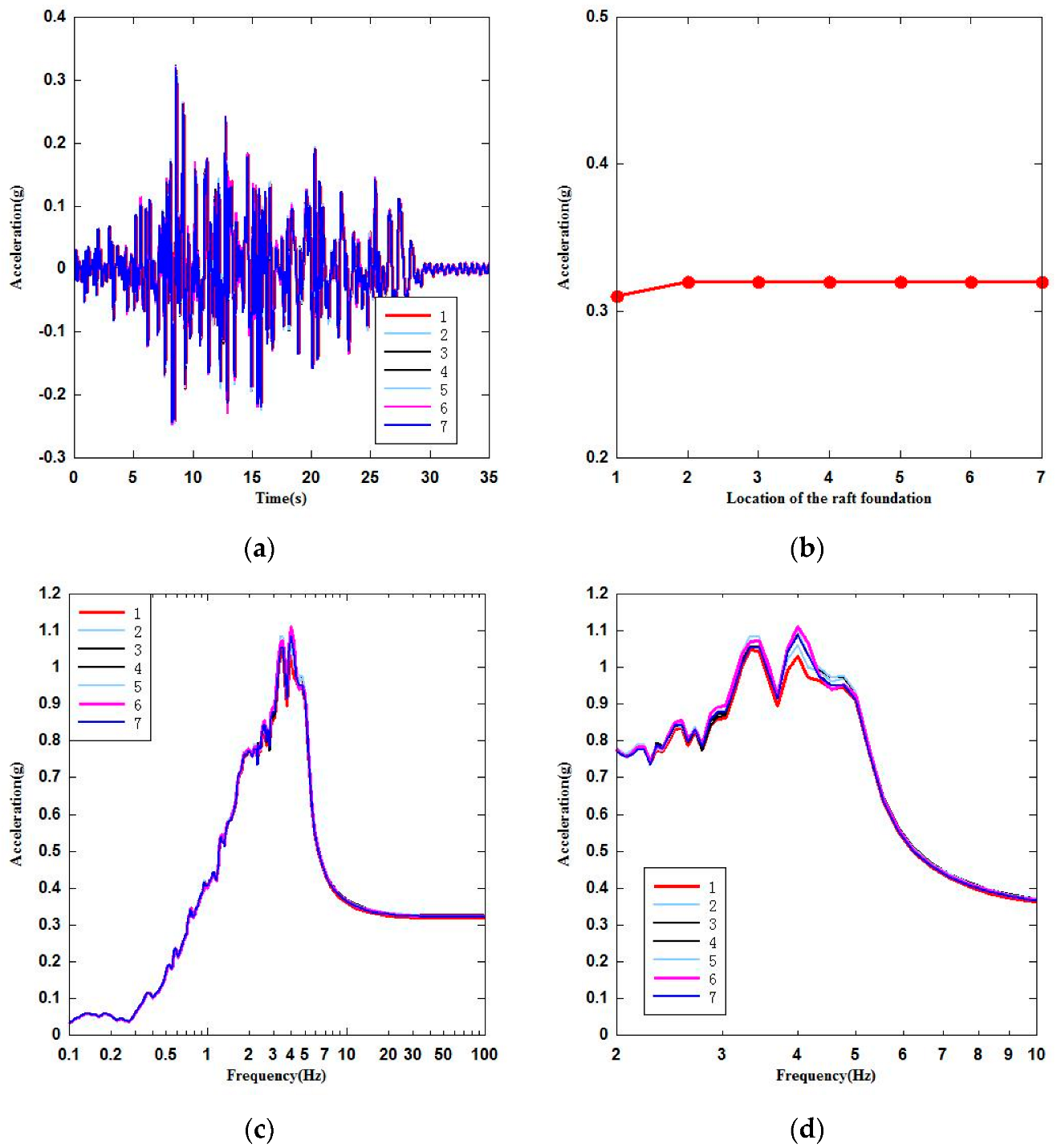
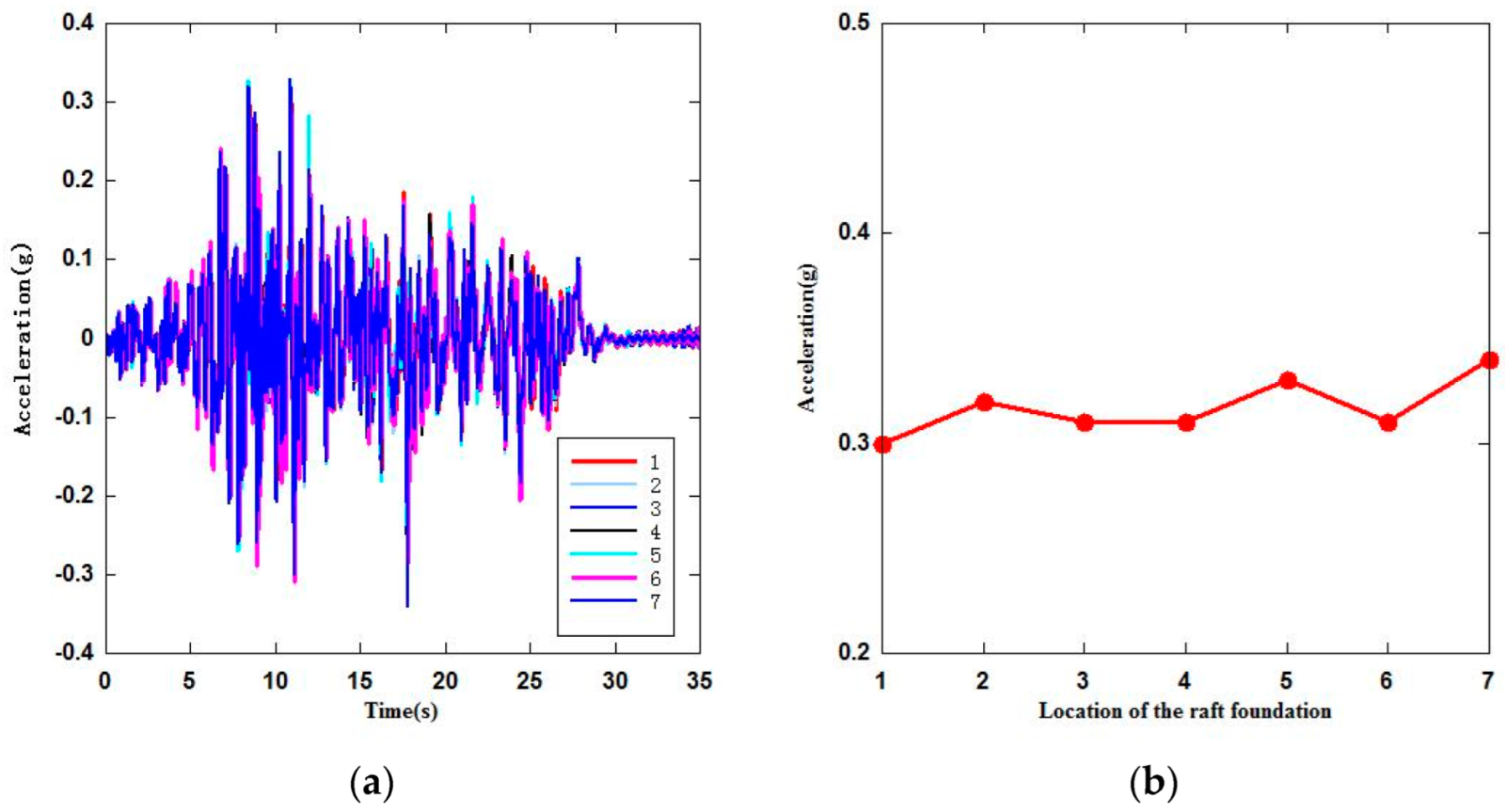

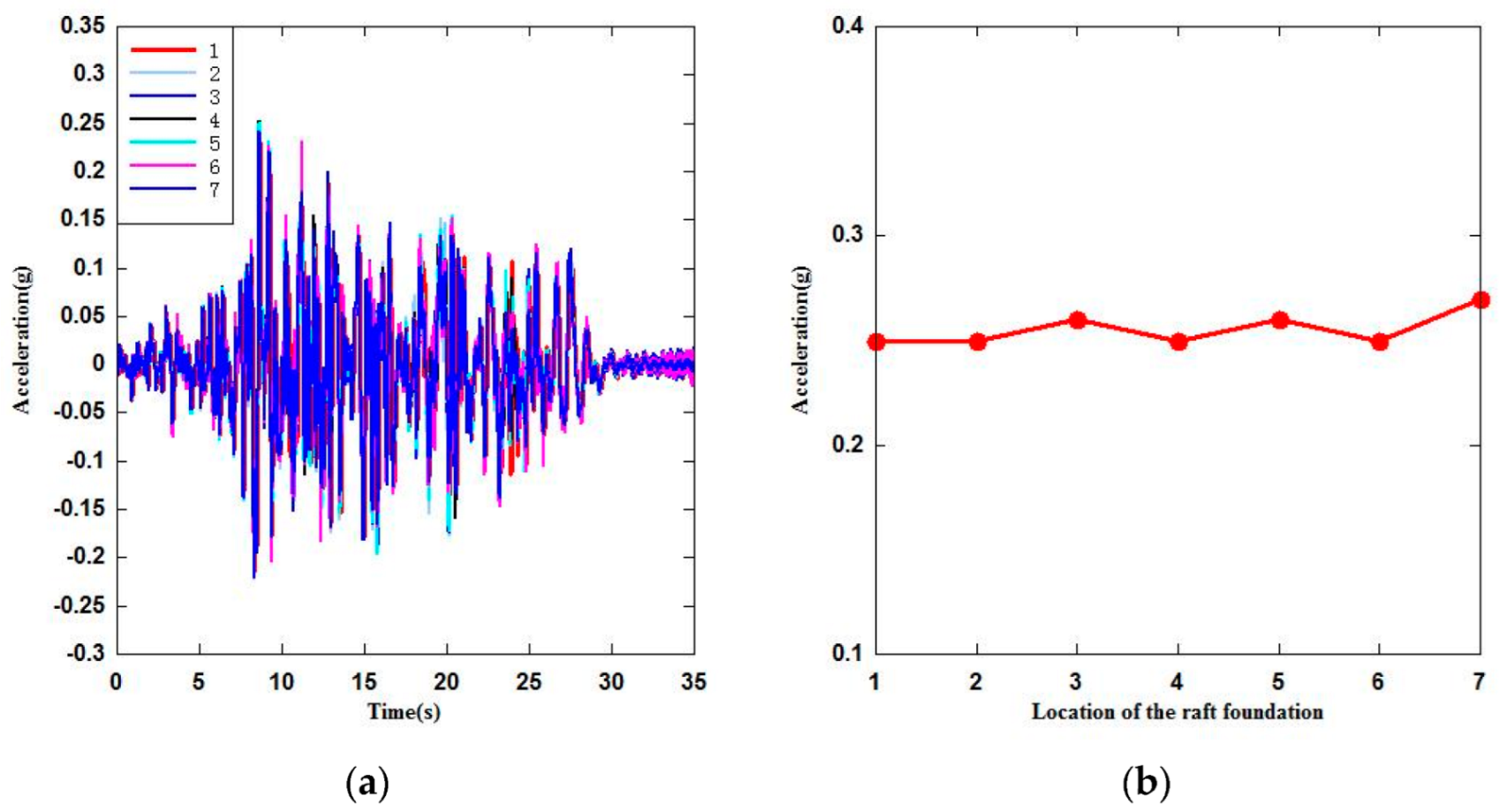
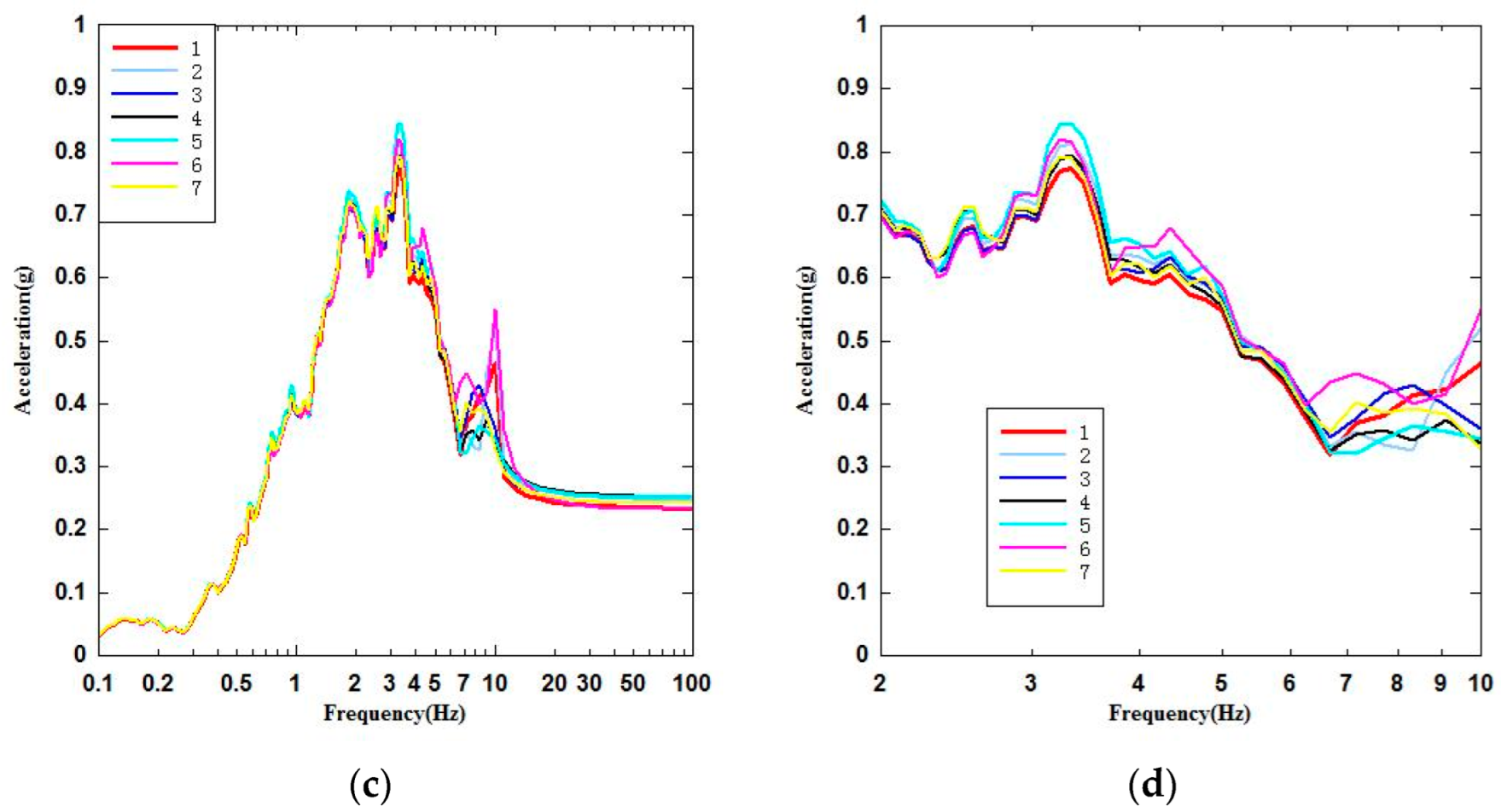
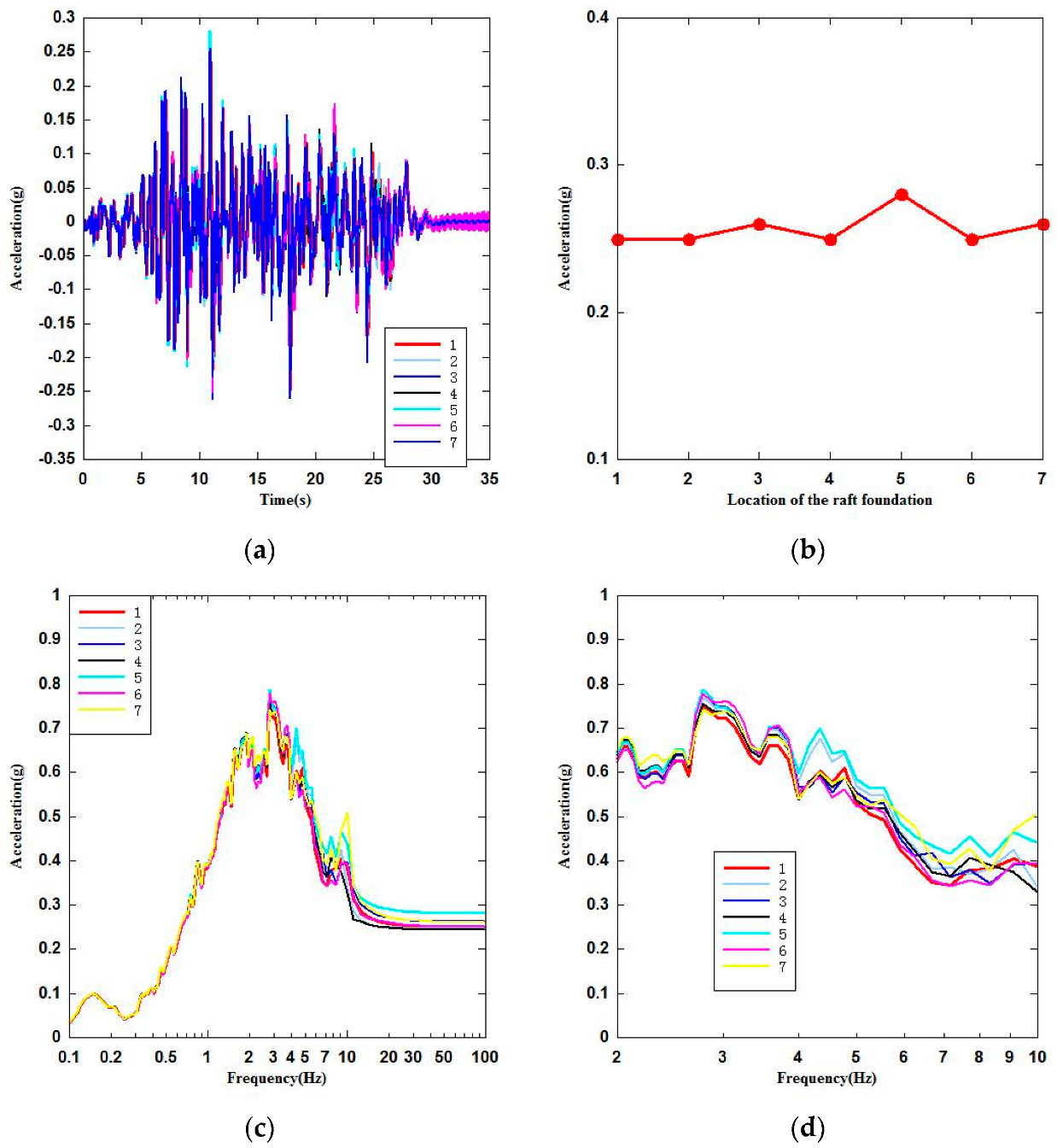
| Site | Depth (m) | Shear Velocity (m/s) | Density (kg/m3) | Elastic Modulus (MPa) | Poisson Ratio |
|---|---|---|---|---|---|
| Firm rock (site II) | 80 | 1146.224 | 2460 | 8539 | 0.321 |
| Bedrock (site I) | 80 | 2500 | 2500 | 40,625 | 0.3 |
| Guangdong NPP site (site III) | 5 | 967.071596 | 1910 | 4923 | 0.378 |
| 15 | 458.45863 | 2020 | 1092 | 0.286 | |
| 20 | 1146.22413 | 2460 | 8539 | 0.321 | |
| 40 | 756.684691 | 2470 | 3612 | 0.277 |
| Direction | Type | Amax (g) | Position | Amin (g) | Position | |
|---|---|---|---|---|---|---|
| x | Site I | 0.40 | 6 | 0.37 | 1 | 8 |
| Site II | 0.32 | 7 | 0.31 | 1 | 3 | |
| Site III | 0.27 | 7 | 0.25 | 1 | 8 | |
| y | Site I | 0.42 | 6 | 0.40 | 1 | 5 |
| Site II | 0.33 | 7 | 0.30 | 1 | 10 | |
| Site III | 0.27 | 5 | 0.25 | 1 | 8 |
| Direction | Type | Smax (g) | Position | Frequency (Hz) | Smin (g) | Position | Frequency (Hz) | |
|---|---|---|---|---|---|---|---|---|
| x | Site I | 1.23 | 6 | 4.16 | 1.15 | 1 | 4.16 | 7 |
| Site II | 1.11 | 6 | 4.00 | 1.05 | 1 | 3.33 | 6 | |
| Site III | 0.85 | 5 | 3.33 | 0.77 | 1 | 3.33 | 10 | |
| y | Site I | 1.22 | 6 | 4.16 | 1.16 | 1 | 4.16 | 5 |
| Site II | 1.03 | 5 | 3.7 | 0.96 | 1 | 3.57 | 7 | |
| Site III | 0.79 | 5 | 2.77 | 0.75 | 1 | 2.77 | 5 |
| Direction | Type | Smax (g) | Position | Frequency (Hz) | Smin (g) | Position | Frequency (Hz) | |
|---|---|---|---|---|---|---|---|---|
| x | Site I | 1.23 | 6 | 4.16 | 1.15 | 1 | 4.16 | 7 |
| Site II | 1.11 | 6 | 4.00 | 1.05 | 1 | 3.33 | 6 | |
| Site III | 0.85 | 5 | 3.29 | 0.80 | 1 | 3.29 | 6 | |
| y | Site I | 1.22 | 6 | 4.16 | 1.16 | 1 | 4.16 | 5 |
| Site II | 1.03 | 5 | 3.7 | 0.96 | 1 | 3.57 | 7 | |
| Site III | 0.78 | 5 | 2.77 | 0.75 | 1 | 2.77 | 4 |
| Direction | Amax (g) | Position | Amin (g) | Position | |
|---|---|---|---|---|---|
| x | 0.46 | 5 | 0.44 | 1 | 5 |
| y | 0.27 | 5/6/7 | 0.26 | 1 | 4 |
| Direction | Smax (g) | Position | Frequency (Hz) | Smin (g) | Position | Frequency (Hz) | |
|---|---|---|---|---|---|---|---|
| x | 1.70 | 6 | 0.82 | 1.65 | 3 | 0.82 | 3 |
| y | 0.98 | 7 | 2.38 | 0.94 | 1 | 2.38 | 4 |
| Direction | Smax (g) | Position | Frequency (Hz) | Smin (g) | Position | Frequency (Hz) | |
|---|---|---|---|---|---|---|---|
| x | 0.86 | 7 | 3.33 | 0.80 | 1 | 3.33 | 7.5 |
| y | 0.98 | 7 | 2.38 | 0.94 | 1 | 2.38 | 4 |
Publisher’s Note: MDPI stays neutral with regard to jurisdictional claims in published maps and institutional affiliations. |
© 2022 by the authors. Licensee MDPI, Basel, Switzerland. This article is an open access article distributed under the terms and conditions of the Creative Commons Attribution (CC BY) license (https://creativecommons.org/licenses/by/4.0/).
Share and Cite
Li, L.; Pan, R.; Lu, Y. Seismic Response Sensitivity Analysis of the Raft Foundation NPP Reactor Building under Different Site Conditions. Energies 2022, 15, 7135. https://doi.org/10.3390/en15197135
Li L, Pan R, Lu Y. Seismic Response Sensitivity Analysis of the Raft Foundation NPP Reactor Building under Different Site Conditions. Energies. 2022; 15(19):7135. https://doi.org/10.3390/en15197135
Chicago/Turabian StyleLi, Liang, Rong Pan, and Yu Lu. 2022. "Seismic Response Sensitivity Analysis of the Raft Foundation NPP Reactor Building under Different Site Conditions" Energies 15, no. 19: 7135. https://doi.org/10.3390/en15197135
APA StyleLi, L., Pan, R., & Lu, Y. (2022). Seismic Response Sensitivity Analysis of the Raft Foundation NPP Reactor Building under Different Site Conditions. Energies, 15(19), 7135. https://doi.org/10.3390/en15197135





